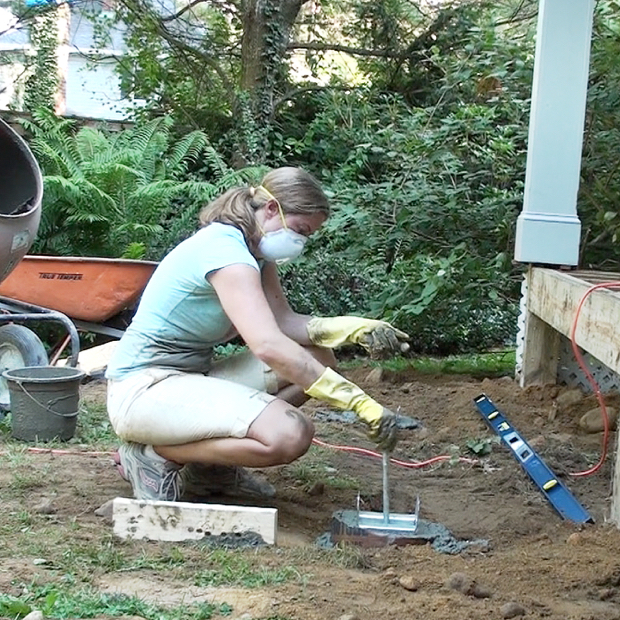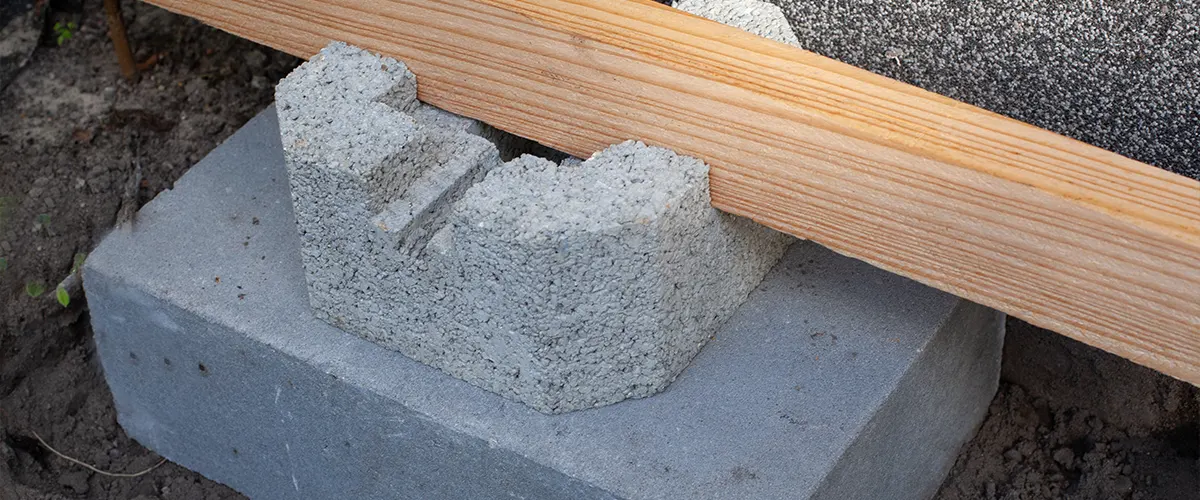Selecting the Right Deck Footings for Stability and Toughness
The durability and safety and security of your deck depend heavily on the kind of grounds you select, as they provide the vital support and stability to hold up against the examination of time. In this discussion, we will certainly check out the various kinds of deck footings, take into consideration the important variables to consider when making a decision, and dig into the pros and disadvantages of various choices.
Kinds Of Deck Grounds
There are numerous types of deck footings that can be used, each offering unique benefits and considerations. One typical sort of ground is the concrete pier footing. These grounds include a round hole loaded with concrete, which supplies a solid structure for the deck posts. Concrete pier footings are reasonably very easy to install and supply exceptional security, making them a preferred choice for many deck projects.
These footings are set up by screwing them right into the ground, which produces a safe foundation for the deck. They also permit for easy adjustment and leveling of the deck if required.
Conversely, some contractors decide for precast concrete grounds. These grounds are constructed from resilient concrete and can be found in numerous sizes and shapes to suit various deck styles. Precast concrete grounds are practical to set up and offer a secure base for the deck structure.
Finally, one more alternative is the post-in-anchor footing system. This kind of footing involves driving a metal support right into the ground and connecting it to the deck blog post. It provides flexibility in terms of placing the deck posts and appropriates for decks with light-weight frameworks.
When selecting the right kind of deck ground, it is important to take into consideration aspects such as soil conditions, deck load, and regional building codes (Deck Footings). Consulting with a specialist contractor or architectural designer can aid make certain the appropriate footing is picked for a risk-free and steady deck
Aspects to Think About When Choosing Footings
When choosing the suitable grounds for a deck, it is crucial to thoroughly consider different elements such as dirt conditions, deck tons, and adherence to neighborhood building codes. These elements play a considerable duty in ensuring the security and longevity of the deck structure.
The type of soil on which the deck will be built figures out the kind of grounds needed. On the other hand, decks built on clay or large dirts might need footings that can accommodate the soil's tendency to broaden and contract.
Another important factor is the deck load. The weight of the deck, consisting of the products made use of and any potential live loads such as furniture or gatherings, must be taken into account when selecting footings. The footings need to be made to bear the weight of the deck and disperse it equally to protect against any kind of architectural problems or failures.
Last but not least, adherence to neighborhood building regulations is critical. Building ordinance differ from region to area, and it is vital to conform with the specific needs set by the local authorities. Deck Footings. These this article codes make certain that the deck is developed safely and fulfills the needed criteria for structural honesty and load-bearing capability
Concrete Grounds: Disadvantages and pros

Concrete footings provide a number of advantages and downsides when utilized as the structure for a deck. On the favorable side, concrete footings supply exceptional security and longevity.
An additional benefit of concrete grounds is their convenience. They can be put into different sizes and shapes to accommodate different deck styles and configurations. Concrete footings can be personalized to fit the details needs and demands of the deck structure.
Nevertheless, there are likewise some downsides to using concrete footings. This can enhance the total expense of the deck project and might require expert help.

Helical Piers Vs. Sonotubes: Which Is Much better?
In considering the foundation choices for a deck, the comparison between helical piers and sonotubes is critical in determining the superior choice. Helical piers, also called screw piles, are steel shafts with helical plates affixed to them. They are twisted into the ground using hydraulic equipment, giving a sturdy and secure structure for the deck. On the various other hand, sonotubes are round types made of cardboard or fiber material that are full of concrete. They Web Site are placed in an opening dug right into the ground and give assistance for the deck.
The helical plates on the piers develop a solid grip with the dirt, shifting or protecting against any kind of motion of the deck. Sonotubes, on the other hand, count exclusively on the concrete filling for security, which might not provide the same level of stamina and resistance.
In regards to installation, helical piers are fairly easier and faster to mount compared to sonotubes. The hydraulic machinery utilized to turn the piers right into the ground makes certain a efficient and quick process. Sonotubes, on the other hand, call for digging holes and putting concrete, which can be time-consuming and labor-intensive.
In addition, helical piers are an even more versatile choice. They can be made use of in various soil problems and can be readjusted or reinforced if required. Sonotubes, on the other hand, might call for additional support, such as rebar, in specific dirt problems or areas with high lots requirements.
Choosing the Right Footings for Your Deck's Measurements
For optimum structural stability, it is necessary to carefully choose the ideal footings that align with the dimensions of your deck. The measurements of your deck, including its size, size, and height, play a considerable function in establishing the type and dimension of footings required.
When choosing footings for your deck, it is necessary to take into consideration the load-bearing capacity of the dirt. The weight of the deck, incorporated with the weight of any furniture or people on it, applies a significant force on the grounds (Deck Footings). For that reason, it is important to select grounds that can directory adequately support this weight without changing or sinking with time.
Larger decks with better measurements call for larger footings to offer sufficient stability and support. The shape of the footings, whether they are square or rounded, depends on the style and layout of the deck.
Conclusion
To conclude, picking the appropriate deck grounds is vital for making sure stability and longevity. Aspects such as the kind of footings, the deck's dimensions, and the benefits and drawbacks of various choices should be taken into consideration. Concrete footings supply strength and longevity, yet might be a lot more expensive and lengthy to install. Helical piers and sonotubes have their own advantages and disadvantages. Inevitably, choosing the appropriate grounds for your deck's specific demands is important for a durable and successful framework.
These grounds are composed of a cylindrical opening filled with concrete, which supplies a strong foundation for the deck articles. Concrete pier footings are relatively very easy to set up and supply exceptional stability, making them a popular selection for lots of deck jobs.
Precast concrete footings are practical to mount and give a secure base for the deck structure.
It offers flexibility in terms of positioning the deck posts and is suitable for decks with lightweight frameworks.
Concrete grounds provide numerous benefits and downsides when used as the structure for a deck.